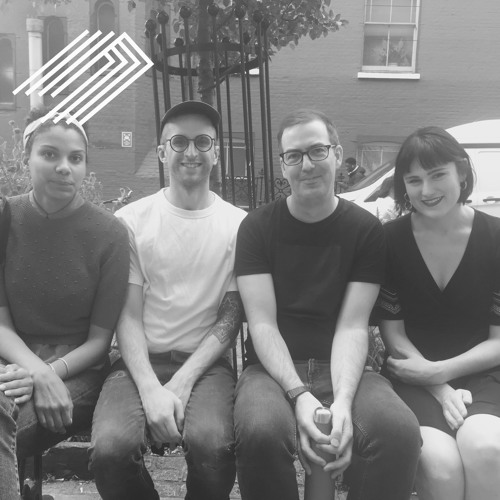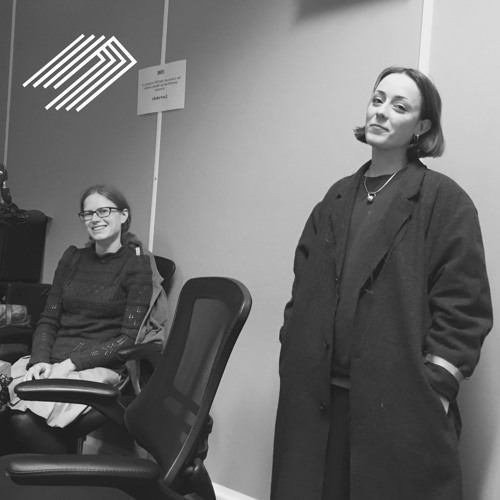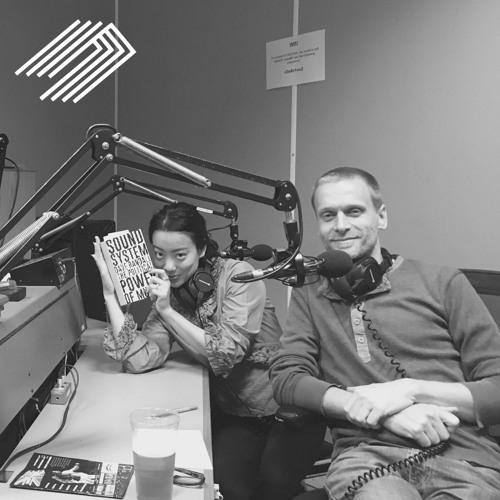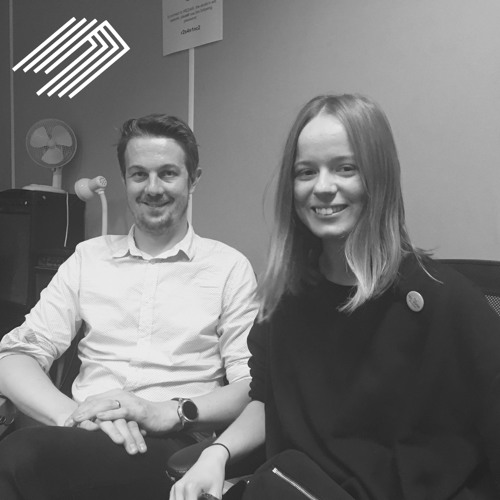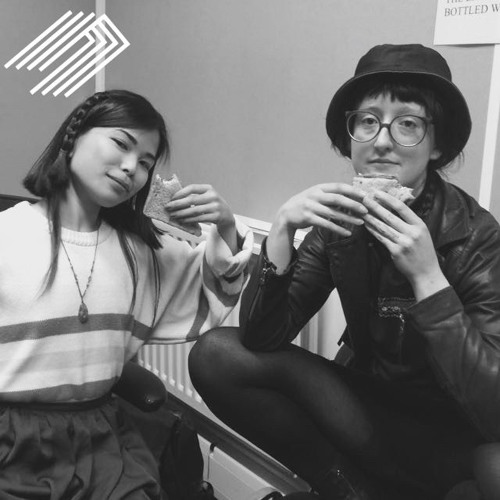Discover Stray Landings
Stray Landings
Stray Landings
Author: Stray Landings
Subscribed: 4Played: 20Subscribe
Share
© All rights reserved
Description
Stray Landings is an electronic music site dedicated to bringing to light the best in forward thinking new producers. We will regularly be reviewing tracks we feel stand out as original, unique and deserving of more attention. We will also be providing guest podcasts to showcase new music, interviews with upcoming artists and articles on current issues within the scene.
For enquiries regarding coverage please enquire via our email address below, both for physical and digital releases.
info@straylandings.co.uk
For enquiries regarding coverage please enquire via our email address below, both for physical and digital releases.
info@straylandings.co.uk
27 Episodes
Reverse
The title of this discussion comes from Q Bass’ 1991 rave jam, ‘Hardcore Will Never Die’, in which a desperate voice asks the listener: well hardcore did die, so where’s the fucking noise? This is noise not in the sense of noise-music, but as hype, as furore, as a burgeoning cultural movement. In the 90s, the question was asked in earnest, to find the next party, rave, or sound-system. But today, looking for ‘the next big thing’ sounds more like a marketing strategy.
Some have argued that ‘hype’ has become an empty signifier for superficial trends and gimmicks: a nightmarish conflation of music and meme. The problem we have now is not so much a scarcity of noise, but an overabundance. The democratising effect of the Internet has enabled a proliferation of new music, and radically new listening practices. So if we want noise, where should we be looking? How can we make sense of it all? Can we find the noise in the ether?
To discuss all this and more, Georgie McVicar from Stray Landings will be speaking with the following label representatives: Chloe Frieda of Alien Jams, Martin J Thompson of SM-LL, Ophelia Aasa of HOLODISC, and Stephen McEvoy of FLUF.
In this episode of Resonance FM, we spoke to Etch and Lucia H Chung about video game music. How many of our earliest experiences of music came from video games? How does that impact our taste on later music making? Is there a romanticisation of 8-bit sounds? What makes video game music distinct from film soundtracks? We discussed all this and more.
Tracklist:
Legacy Support // Akzidenz
The Pulse of Aura // Lucia H Chung & Martin Thompson
Lost Methods // ETCH
Julia Chang Theme [Tekken 3] // Nobuyoshi Sano
Merqury City [SSX Tricky] // John Morgan
J-E-N-O-V-A [Final Fantasy 7] // Nobuo Uematsu
On this episode of Stray Landings FM, we spoke to Blue Maignien of Cherche Encore about the role of audiences today, and accessibility (or lack thereof) in music.
In this episode of Stray Landings FM, we spoke to Simon Unwin, also known as Hence Therefore, about the role of sponsorship in music: what are the ethics of branding? What is the role of major corporations in underground music today? What alternatives are available? Listen below.
In this episode of Stray Landings FM, we spoke to Ophelia Aasa of HOLODISC about the nature of creative inspiration, influences, and intertextuality in music.
In this episode of Stray Landings FM, we spoke to Sean Hughes, AKA Rumah, about the housing crisis in London and its impact on music.
**Apologies for the interference at the start of the show**
In our final show of the year, we spoke to India Jordan of New Atlantis about the year in the music.
Legacy Support // Akzidenz
Pierrot // Alex Zhang Hungtai
Red Cotton // Shelley Parker
Hidden Tropics // Alex Kassian
Sangue de Galo // Serpente
1000 Speedboats // Great Dad
Trigger Finger // ZULI
Police Blow My Wad // Afroman
In this episode of Stray Landings FM, we spoke to MX World and Luba Elliott about generative art: what is it, what generative principles are used in music, and what ethical questions does generative art pose?
Tracklist:
Legacy Support // Akzidenz
Excavating // MX World
Information Needed to Create an Entire Body // Caterina Barbieri
In this episode of Stray Landings FM, we talk to Dave Randall about his new book, 'Sound System: The Political Power of Music'.
Tracklist:
Akzidenz // Legacy Support
Drillminister // Political Drilling
In this episode of Stray Landings FM, we spoke to J.Tijn about the role of the author in music: does an artist's intentions matter when evaluating the success of an artwork? Why do musicians use different aliases? What are the reasons for going 'anonymous'?
Tracklist:
Legacy Support // Akzidenz
Jesse Kuyé // All Whey
Madvillain // Fancy Clown
The Caretaker // The Great Hidden Sea of the Unconscious
In this special episode of Stray Landings FM, we continued our focus on Taiwanese experimental music with Lucia H Chung, speaking with Fujui Wang & Lu Yi of Soundwatch and Tadeo Sendon of Music Hackspace.
Tracklist:
Akzidenz // Legacy Support
Fujui Wang // korner
Lu Yi // Demo1_2016
Meuko!Meuko! // The Temple
LTY // Salo #620
In this episode of Stray Landings FM, we spoke to Sheryl Cheung, Lucia H Chung and Harry Murdoch (of Music Hackspace) to talk about experimental electronic music from Taiwan.
Tracklist:
Legacy Support // Akzidenz
Earth Crust Quake // Sheryl Cheung
Searching for Nature in Machines // Sheryl Cheung
before // en creux
206, The Dancing Girl // 张又升 Zhang Yousheng
In this episode of Stray Landings FM, we spoke to Stuart Fowkes (of Cities & Memory) and Maria Ustimenko (of Edited Arts) about the relationship between music and metropolis, space and psychology. What is the sound of London? How does noise pollution change our psychology? What would our ideal city sound like? We discuss all this and more.
Tracklist:
Akzidenz // Legacy Support
Cities & Memory // The Next Station... is Covent Garden
Burial // South London Boroughs
Steve Reich // New York Counterpoint
In this episode of Stray Landings FM, we talked to Gribs of Tobago Tracks and DJ Space Heater of HMT Hard Cru about the intersection of music and the Internet. How has the Internet changed how we distribute, manufacture and listen to music? What is 'post-internet music'? Will there ever be a priceless MP3? Listen below.
Akzidenz // Legacy Support
James Ferraro // Adventures In Green Foot Printing
SOPHIE // Faceshopping
In this episode of Stray Landings FM, we were joined by Angela Chan of Worm and Moonbow to discuss the relationship between music and nature. We discuss the use of natural sounds in music, how art shapes our understand of climate change, and the politics of naturalism.
Tracklist:
Akzidenz - Legazy Support
Moonbow - [unknown]
Colin Stetson - Part of Me Apart from You
Animal Collective - Loch Raven
Gas - [untitled] (from 'Pop')
In this episode of Stray Landings FM, we are joined by Dr Monique Charles & Hence Therefore as we discuss the relationship between music and the state: how music can resist the state, the impact of state laws and borders on music culture, and the meaning of 'piracy'.
Tracklist:
Legacy Support // Akzidenz
Flutter // Autechre
Igloo // Wiley
Black Pepper 炎 // Hyph11e
Bad Hope // Hence Therefore
Despite its seeming nascence, coded music has a long history. During the slave trade, people in Nigeria and Ghana used drum telegraphy to communicate with each other over long distances. When colonial European intruders came into the jungles, message of their arrival and their intention was often carried through the woods a step in advance. A transmission through drumming could travel at a speed of 100 miles per hour. This ‘coded drumming’ was thus banned by the slave owners, as it functioned as a secret language and a tool for resistance.
Musicians as far back as the Baroque period have also included hidden messages (or ‘musical cryptograms’) in their scores. Most notably, Bach included his own signature into his music in an act of bizzare narcissism. Pauline Oliveros even used a C-A-G-E motif for her obituary piece for John Cage, CAGE DEAD. I’ve often thought that someone should do an A-C-A-B motif as a coded message against the police. Musical cryptograms received some unwanted attention in the 80s when fundamentalist Christian groups began accusing heavy metal bands like Led Zeppelin of ‘backmasking’ satanic messages. Inspired by these lawsuits, Slayer made the ingenious twist of logic to purposefully include clear and obvious satanic messages in their music. When under fire for supposedly corrupting the youth, vocalist Tom Araya explained that these messages were, “purely for effect”.
Now we have ‘live-coding’, a technique that seems almost ubiquitous in underground electronic music, from Tokyo’s Japanoise scene to the ‘Algorave’ parties. Here, the underlying programming code of the music is projected on to a wall, for the audience to follow and admire. This serves two interesting purposes. First, it has a democratising effect, in that it allows the audience to see the source of the sound. ‘Laptop-DJing’ (such as Gold Panda’s ‘space-bar sets’) have been lampooned for their closed-off nature. The running joke goes that DJs are just playing iTunes and checking E-mails. But live-coding has the opposite effect: giving full disclosure of sound source to the audience. This anti-hierarchical attitude resonances throughout the coding community, who unite through a shared understanding of open-source and transparency.
The second interesting effect of live-coding is the reintroduction of a visual element. Earlier this month, Daniel M Karlsson told us that he has become, “enchanted by the look and feel of The Terminal”. Many artists have taken the spectacle of code to new levels. Through their work, Ryoji Ikeda and TCF encourage us to gawk at dazzling flickers of numbers and data. AGF has even found beauty in speaking code live, like a kind of poetry of programming. The ‘pure effect’ of coded messages that Slayer employed is also found in the music of Boards of Canada. BOC’s music makes you feel as though you are being hypnotised by subliminal messages. Uncanny voices run through the alphabet and random number sequences to create a sense of nostalgia and intoxication. But the decoded messages themselves don’t really matter, it’s the effect.
Today, there is something potent in the mixture of fear and love that we have for our computers. Economics, employment, entertainment and even our love-lives are beholden by streams of big data and faceless algorithms. Art that takes code as its subject seems to suggest either a caution against the future or the worship of a new master. The question is: why is the information encoded? Who does it protect? Who does it exclude? In which direction is the power flowing?
In this episode of Stray Landings FM, we spoke to Jasmine Guffond and Calum Gunn about code, codification and codified music. Listen below.
Tracklist:
Legacy Support // Akzidenz
Outer // Calum Gunn
Post-Human // Jasmine Guffond
The Devil Is In The Details // Boards of Canada
54 C6 05 1C 13 CC 72 E9 CC DC 84 F2 A3 FF CC 38 1E 94 0D C0 50 5C 3E E8 // TCF
time {if 1+2 = you} // AGF
There’s a received wisdom that visual elements of music production (the artwork, light shows and fashion) are merely auxiliary. Music should be appreciated in an almost Platonic way: wrenched from context and understood in terms of sound only. After all, why should your listening be coloured by a dazzling light-show or a flashy press shot?
Indeed, there are some artists who have tried to negate this by ‘anonymising’ themselves: Zomby, Burial, Klaus are famous for it. There are degrees of consistency here, from the near-entire invisibility of Klaus to the pseudo-disguise of Zomby. With Zomby, the anonymity is the look. He is always half-hidden behind a coat or a mask, and dressed in the height of designer clothes. His press-shots both hide his identity and confirm it. Even the man who conceals himself nonetheless reveals himself as a self-concealer.
There are also musicians who use visual components as a way of making sound. IDM artists have been using spectrograms to encode secret messages for decades, and last year, Jasmine Guffond released an album of ‘sonified’ data from GPS signals and facial recognition software. Even Daphne Oram ruptured this audio-visual dualism with her famous ‘Oramics’ machine.
Then there is the visualisation of sound. A common cliche of modern music production is its visual bias. These days, producers use laptop screens to see how something sounds. As a consequence, we are alienated from sound. The language of production — soundscape, aural decor, furniture music, sonic sculpture — must always make recourse to the visual.
In the 20th century, many avant-garde composers attempted to liberate music from the conventions of visual representation. John Cage, György Ligeti, Krzysztof Penderecki, Karlheinz Stockhausen and Iannis Xenakis all wrote ‘graphic scores’ that attempted to disrupt the orthodoxy of classical notation. Staves, clefs and crochets were bent out of shape into psychedelic configurations. Beyond pitch and rhythm, this radical new notation captured all aspects of sound including timbre, space and emotion.
Finally, there is the strange but consistent flirtation of fascist imagery in techno and industrial music specifically. Throbbing Gristle were infamous for it — in trying to shock their audience out of their dogmatic slumbers, the group appropriated the ‘flash in the pan’ logo of the British Fascist Union and projected footage from Auschwitz at their live shows. More recently, revivals in gabber have made similar gestures, such as Gabber Eleganza’s fashy-looking flag-waving on stage. Their intention, I think, is meant to be understood as ironic. But the irony is lost when your audience comprises a demographic of white skinheads.
In this episode of Stray Landings FM, we speak to Robin Buckley and Alice Bettinger about all this and more.
Tracklist:
Legacy Support // Akzidenz
Tele // Klaus
RIDE / SNARE / CLAPS / CHORD F 128 / LEAD 1 E 128 / KICK / KICK // rkss
Nix // GANX
Data.Matrix // Ryoji Ikeda
2017 has been another year of political turbulence, social degradation and economic turmoil. This doesn’t look set to change anytime soon. But if you’re looking for a source of momentary escapism, the music mentioned above may be helpful in some way. Optimism can seem foolhardy, London’s community can feel like a forgotten dream, and the financial prospects of musicians and artists at large seem to get bleaker by the month. Yet once again we find ourselves overwhelmed by the endless streams of dynamic and inventive new music from all around.
These days it sometimes feels like each person flicking through records in a store or queueing to have their wristband fitted at a festival has their own place in the scene, by virtue of making music themselves, running a night, blog or related project. Rather than rolling our eyes in that “everyone’s a pundit” kind of way, it’s worth considering the transformative effects this widespread involvement can have, and is already having in the world of electronic music. We are seeing a democratisation of DIY labels, bolstered by the support of DIY festivals, blogs, radio shows and more.
If you want to read more about our thoughts on the year, please over here for more details: http://straylandings.co.uk/articles/the-stray-landings-christmas-pudding
Tracklist:
Akzidenz // Legacy Support
Wilted Woman // Heating Problem
Laurel Halo // Moontalk
A.O.T // Dans Kring Granen
Pauline Anna Strom // Mushroom Trip
xin // Body Parts And Organs That Humans Do Not Need
LYZZA // Bad Habits
Ellen Arkbro // For Organ & Brass
Sebastian Camens // Tan Object 3
Jesse Osbourne Lanthier // Lick and a Promise
MHYSA // You Not About That Lyfe
Petit Singe // Bengala Raciti
FIS & Rob Thorne // Wooden Lung
Machine Woman // Camile From OHM Makes Me Feel Loved
V/Vm // A White Christmas
If we should be thankful for anything from the 90s UK pop culture, it should rave. The rave culture of 90s UK can be a hard one to describe. ‘Rave’ can often hold a broad definition, encircling any and all culture related to nightclubs or to dancing. But there is a specific 90s trend in music culture that ‘rave’ is home to. Inspired by the Ibiza clubs and the development of house and techno in Chicago and Detroit, rave parties and rave records began appearing in the UK at the turn of the decade. They were high-octane, anarchistic, and fuelled by kilos of MDMA. Imagine 20,000 people dancing in a field to repetitive breakbeat on a homemade sound system off the M25. This was the spirit of rave. Although seemingly trivial, this odd historical moment in UK culture sparked an explosion of dance music throughout 90s. The format of rave was ultimately responsible for the development of acid, jungle, speed garage and bassline: some of the UK’s most urgent and innovative music from the past 20 years.
One common criticism of rave was its apolitical bent. In some ways, rave seemed decidedly anti-political. Ravers simply had no demands besides a space to dance and the decriminalisation of E. History, it would seem, had ended. All we could do now was party. But this is an unfair portrayal. One of the first illegal warehouse parties in the UK was the legendary R.I.P club. It’s said that the majority of the attendees thought the club’s name was an abbreviation of ‘Rave In Peace’. It was actually ‘Revolution In Progress’. But what was this revolution that they were aiming for? The political attitude of rave was one that aimed to counter the previous Thatcherite “virtues” of the 80s: austerity, providence and tightening ones belt for the future. Suddenly, living hand-to-mouth, in the here-and-now became a political goal worth fighting for.
Is there a sense in which we have forgotten how to enjoy ourselves? Should we, as Simon Reynolds asks, “make of joy once more a crime against the state”? On this month’s Resonance FM show, we talked to DB1 and our Resonance studio engineer, George Rayner-Law about RAVE: its music, its culture, ‘the hardcore continuum’ and fighting for the right to party.
Tracklist:
Akzidenz - Legacy Support
Double 99 - RIP Groove
DB1 - Feld
Head High - RAVE
Zomby - Float


